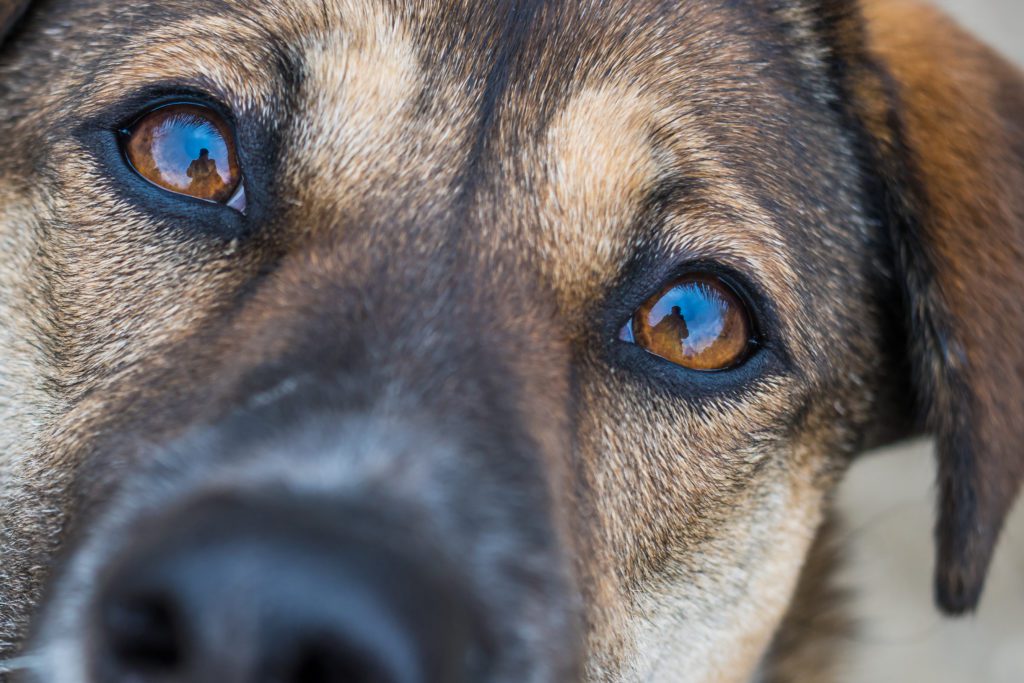Do Dogs See Color in Kittery, ME
It used to be commonly accepted that dogs didn’t see in color. And this is mostly because longtime dog fancier and past publisher of Dog Week magazine, Will Judy, declared in 1937 that dogs had poor vision and could only see single shades, tones, general outlines and shapes. Since those long ago days, dog vision has been extensively researched. And while not everything is known about canine vision, we do know they can see some colors and do not live in a world of black and white. This article will discuss what dogs can see, and why they are able to see some color.
How The Eye Works
It’s fairly simple to understand how the eye works in relation to how a dog’s vision differs from a human’s. Color is seen by the eye’s nerve cells. The retina is made of cells and receptors which are called rods and cones. Rods are what a person or animal needs to detect motion and help with varying shades of light, and cones aid in differentiating colors.
People who are not color-blind can see three color combinations, which are red, green, and blue, because they have three types of cones. Dogs only have two types of cones, which are yellow and blue. This two colored vision is called dichromatic. Normal vision for a dog is most like a human who has red-green color blindness. In humans, there are two kinds of color blindness. In addition to the red, green, color blindness, people can also have blue, yellow, color blindness. Like dogs, people who have red, green, color blindness are not able to distinguish between those colors and will see them as brownish or gray.

Colors Dogs See
Research and conclusions about canine behavior and eye structure show pretty clearly that dogs can’t see all of the colors people do, but they can see some colors. Compared to humans, dogs see a limited amount of colors. Through current research, it’s believed that dogs have a unique color spectrum in which yellow and blue are the dominant colors in their vision. Violet, blue, and blue-green take on shades of blue. And to dogs, reds and greens are probably closer to browns and grayscale.
Why Dogs See Limited Colors
Through research, it was discovered that canine eyes have a structure that developed for nocturnal hunting. Their eyes adapted to see well in darkness and to discern movement. Canines have a larger lens, corneal surface, and reflective membrane (tapetum), for enhanced night vision. Light bounces from the membrane, allowing the eye to take in more light, strengthening night vision. This reflection is what makes dog’s eyes seem to glow in the dark.
Their retina is made of millions of light-sensing cells. And dogs have more rods than human beings have, which also improves low-light vision. But dogs have less cones than humans do. Humans have three kinds of cones whereas dogs only have two. Dogs do not have the red-green cones. The red-green cones are also the ones missing in color-blind people.
Dog’s eyes evolved to let them thrive in the wild. Not only did their vision become suited for night hunting, but to let them know, through motion detection, when they were being hunted and needed to flee. These visual adaptations still remain with dogs today even though most will never need their inborn hunting abilities.
How Dog And Human Vision Compare
While dogs may not be able to see true color depth, or the range of colors people can see, they can perceive different colors. To a dog, shades of red would appear brownish-gray. While yellow, green, and orange all take on yellow hues. Blues and purple are seen as blue hues. Other visual differences are, dogs are more near-sighted than humans, and their vision is not as sharp as humans. Additionally, dogs are not as sensitive to changes in brightness. But oddly enough, dogs do have some visual advantage over people. Dogs have a broader range of peripheral vision than people because their eyes are set more to the sides of the head. But a smaller range of visual acuity results in less depth perception. And their pupils dilate maximally, which gives them as much light as possible. They can see even small movements at a great distance.

Visual Accommodations
You should keep your dog’s visual differences in mind when you choose toys and products for him. Purchase items in colors he can see. It’s probably wise to stay away from red, pink, and orange hued toys and stick with yellow or blue. A red ball could easily be lost in the grass as it blends in. When your dog runs right past the toy, it isn’t because he has low intelligence, it’s because he can’t see it. Yellows and blues will be the easiest for him to see. He’ll be more inclined to play with a toy that’s easier to spot in grass.
Conclusion
We now know our canine friend’s vision is very much like a human who has red, green colorblindness. We know he sees better at night, and he has a broader visual range, because of eye placement, than people do.
Understanding how dogs see, and why, is beneficial to anyone who wants to know why their dog sometimes cannot find toys, such as a red ball thrown into grass. Red and orange are popular colors for dog toys, and unfortunately, those are bad choices. It would be much wiser to purchase items in yellow and blue for your dog friend. This may be the reason some dogs seem to love yellow tennis balls. If we use the knowledge of how dogs see, we can understand their behavior better and deepen our relationships with them.
Dogs adapted to live the wild hunting life, but today they are our friends and companions. The more we learn about dogs, the better we can enjoy every moment we spend with them. They enrich our lives, and we do the same for them, through knowledge, our bonds can only grow stronger.
If you need to schedule an appointment for your pet, please call our vet at (207) 439-2661.

